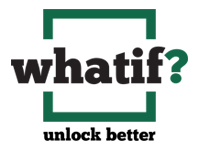“No matter how good we are individually we are never as good as we are collectively.”
The breathtaking pace of change in our operating environment coupled with increasing stakeholder demands means we must tap into the strengths of the team or risk failing.
Time to Read: 2 min.
Last week’s Thought Letter introduced the value creation equation, IQ + EQ + XQ = VC, and how value creators apply the three elements of the equation to achieve better outcomes. Better leaders build better teams and better teams drive better outcomes.
High performing teams have an outsized impact on an organization yet remain an outsized challenge to create. Over the next there weeks I’ll touch on the keys to unlock better team performance.
First, let’s start with an outdated notion. We have been led to believe that it takes a “large and in charge” leader to assess problems, decide what to do, and hold people accountable for getting it done. Let’s disabuse ourselves of that notion. No matter how good we are individually we are never as good as we are collectively. The breathtaking pace of change in our operating environment coupled with increasing stakeholder demands means we must tap into the strengths of the team or risk failing.
The value creator leader is a thoughtful consensus builder who uses the power of consensus to uncover signature issues. They consistently:
- Focus on business impact and what impedes the customer (internal as well as external) and employee experience.
- Operate from a place of curiosity and adopt an inquiry mindset to understand what’s really going on.
- Demonstrate humility and create a safe environment where candid and open discussion is welcome.
- Seek diverse perspectives and encourage healthy debate until the team consents on the fundamental issue to address.
- Foster collective buy-in as a prerequisite for individual buy-in.
Value creators also appreciate that people have no shortage of ongoing tasks and goals to achieve so they consider what must be stopped or paused to take on something new. And the signature issue is aligned with purpose and mission; not what’s political, expedient, or tied to personal metrics. A CEO once told me his organization takes on far too many projects aligned with maximizing executive compensation vs. improving the customer experience.
So how do you approach problem detection and assessment today? On a scale of 1 – 10, how would you rate your consensus building game? What if you adopted the five tactics above as a new way of engaging with your team? What could you accomplish?
Whether you are a CXO transforming a P&L, Finance, IT, or HR, or a front-line leader tasked with implementing change, building team consensus is a critical success factor for achieving desired outcomes. As the African proverb says, “If you want to go fast, go alone, if you want to go far, go together.”
Next week, I’ll cover how to harness EQ to develop solution options.


Leave a Reply